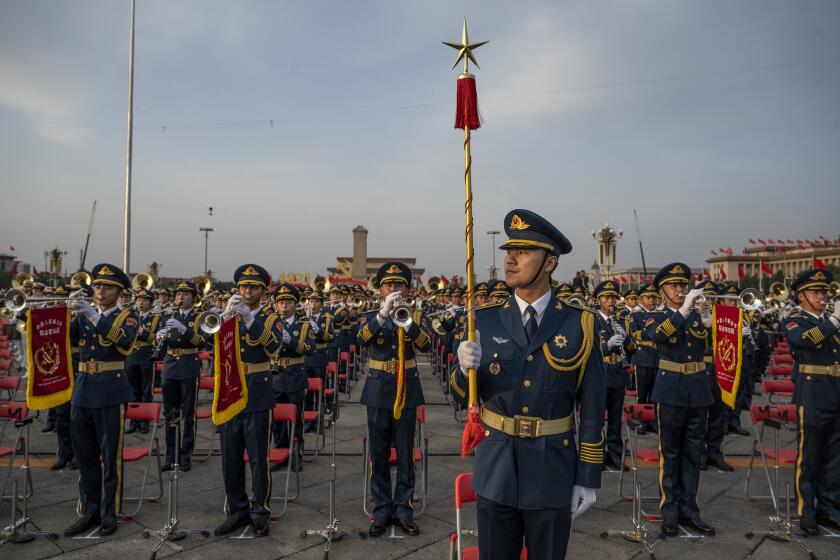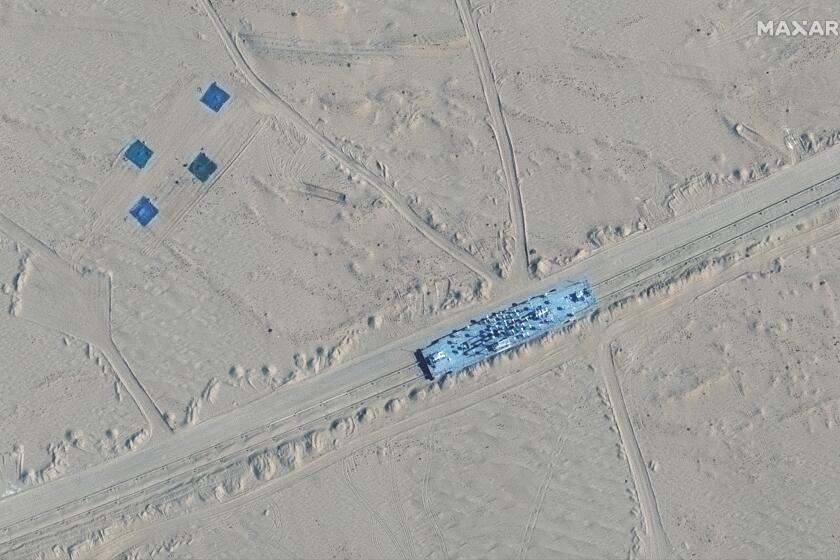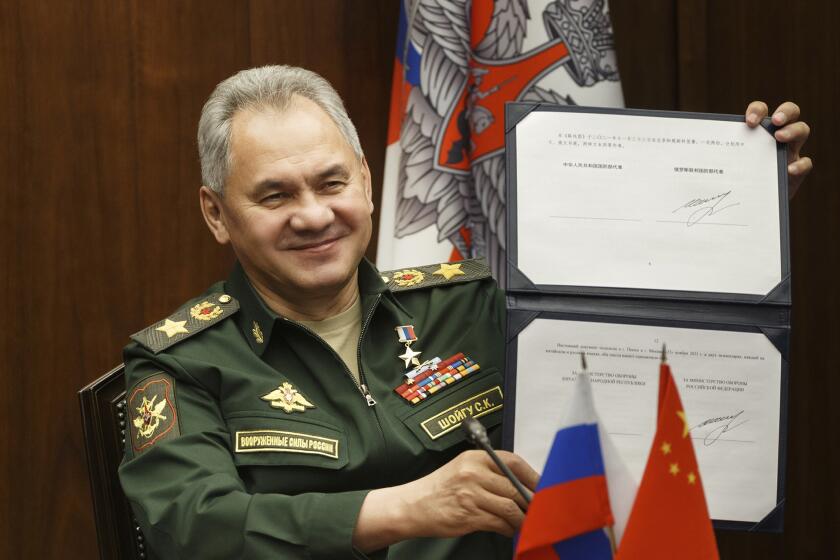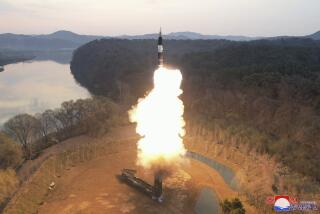Defense Secretary Austin slams China’s drive for hypersonic weapons
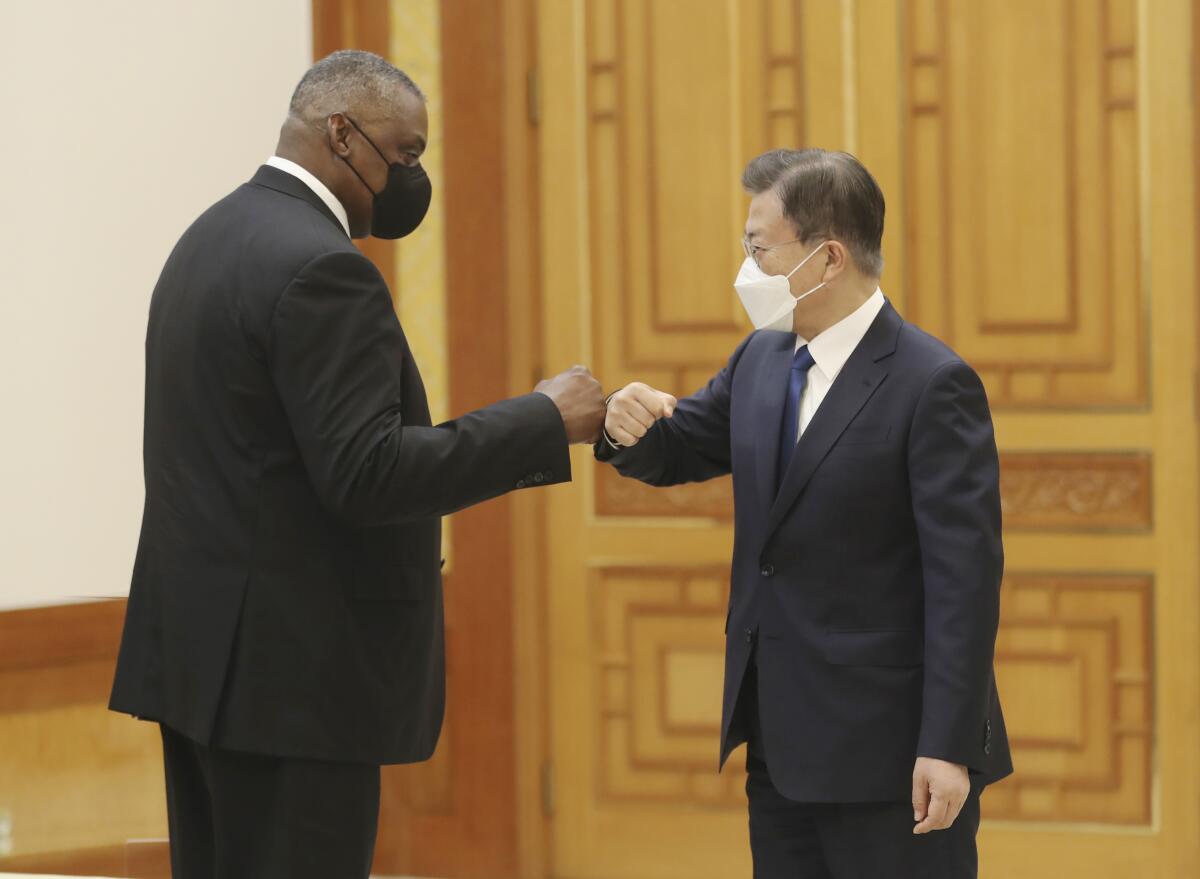
Defense Secretary Lloyd J. Austin III rebuked China on Thursday, vowing to confront its potential military threats in Asia and warning that its pursuit of hypersonic weapons capable of penetrating U.S. missile defenses “increases tensions in the region.”
Austin’s stern comments after annual security talks with South Korea, a key U.S. ally, are a window into one of the Biden administration’s top foreign policy worries: How should Washington and its partners respond to a Chinese military that is getting stronger — both in firepower and in confidence — as it pursues an end of American dominance in Asia?
China sees much of Asia as its natural sphere of influence. But many in the region warn of a pattern of Chinese interference, accompanied by moves to acquire the weapons needed to dominate its rivals. Austin’s comments were directed at China’s July test of a hypersonic weapon capable of partially orbiting Earth before reentering the atmosphere and gliding on a maneuverable path to its target.
Experts say the weapons system is clearly designed to evade U.S. missile defenses, although China insisted it was testing a reusable space vehicle, not a missile.
“We have concerns about the military capabilities that [China] continues to pursue, and the pursuit of those capabilities increases tensions in the region,” Austin said about the hypersonic weapons test.
“We’ll continue to maintain the capabilities to defend and deter against a range of potential threats” to the U.S. and its allies, he said.
It was already a dangerous race: China versus the United States, each pouring hundreds of billions of dollars into missiles, submarines, warplanes and ships, vying to dominate the Indo-Pacific. Now that race may be going nuclear.
The Pentagon on Monday released the results of a global posture review that calls for additional cooperation with allies to deter “potential Chinese military aggression and threats from North Korea.”
Last month, Gen. Mark Milley, chairman of the Joint Chiefs of Staff, said the U.S. was also working on hypersonic weapons. But there is worry in Washington that it is lagging behind China and Russia in pursuing these types of weapons. Russia said Monday that its navy successfully tested a prospective hypersonic cruise missile.
Hypersonic weapons, which fly at speeds in excess of Mach 5, or five times the speed of sound, could pose crucial challenges to missile-defense systems because of their speed and maneuverability. But some experts argue that hypersonic weapons would add little to America’s ability to deter war and worry that they could trigger a new, destabilizing arms race.
Austin also addressed another major U.S. worry: North Korea.
Satellite images show China has built mock-ups of a U.S. Navy aircraft carrier and destroyer in its northwestern desert, possibly for military drills.
He said he agreed with South Korean Defense Minister Suh Wook that the North’s growing weapons program “is increasingly destabilizing for regional security.” Austin said the allies remained committed to a diplomatic approach to North Korea.
Suh said the two agreed on a document updating joint contingency plans in the event of a war on the Korean Peninsula to reflect changes in North Korean threats and other conditions. He did not elaborate on the document’s details.
North Korea’s nuclear arsenal is believed to have grown significantly in recent years.
After a series of high-profile missile and nuclear tests in 2016-17, North Korea claimed to have the ability to launch nuclear strikes on the U.S. homeland. According to a 2018 South Korean estimate, North Korea has built up to 60 nuclear weapons.
Russia and China, in committing to closer military ties, point to increasingly frequent U.S. strategic bomber flights near both countries’ borders.
Despite severe economic hardships related to the pandemic, North Korea has continuously rebuffed U.S. offers to resume disarmament talks, saying that Washington must first abandon its hostility. The Biden administration maintains that international sanctions on North Korea will stay in place until the country takes concrete steps toward de-nuclearization.
The U.S. stations about 28,500 soldiers in South Korea to deter potential aggression from North Korea. During Thursday’s meeting, Austin highlighted a U.S. commitment to maintain the current level of forces, according to a joint statement.
The alliance, forged during the 1950-53 Korean War, was tested in recent years as then-President Trump threatened to pull U.S. troops out of South Korea if Seoul did not drastically increase its financial support for them. Trump also repeatedly complained of the cost of regular military drills between Washington and Seoul.
Such concerns have eased since President Biden took office. But the alliance still faces challenges, such as Seoul’s historical disputes with Japan, another key U.S. regional ally, and its hesitation to join U.S.-led initiatives targeting China, its biggest trading partner.
Austin and Suh pledged to continue trilateral cooperation involving Japan. But they didn’t elaborate on how South Korea and Japan could overcome tensions stemming largely from Tokyo’s 1910-45 colonization of the Korean Peninsula.
More to Read
Start your day right
Sign up for Essential California for news, features and recommendations from the L.A. Times and beyond in your inbox six days a week.
You may occasionally receive promotional content from the Los Angeles Times.
